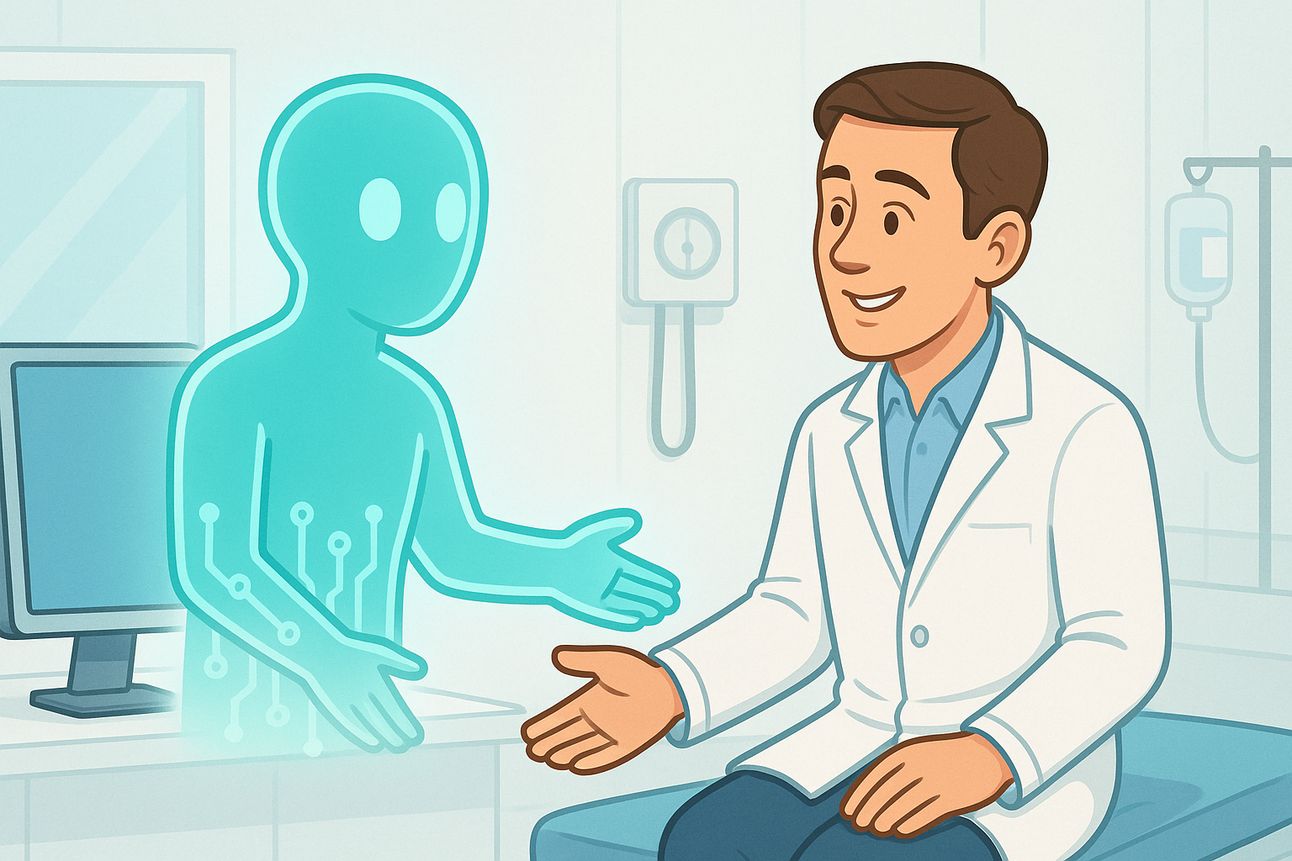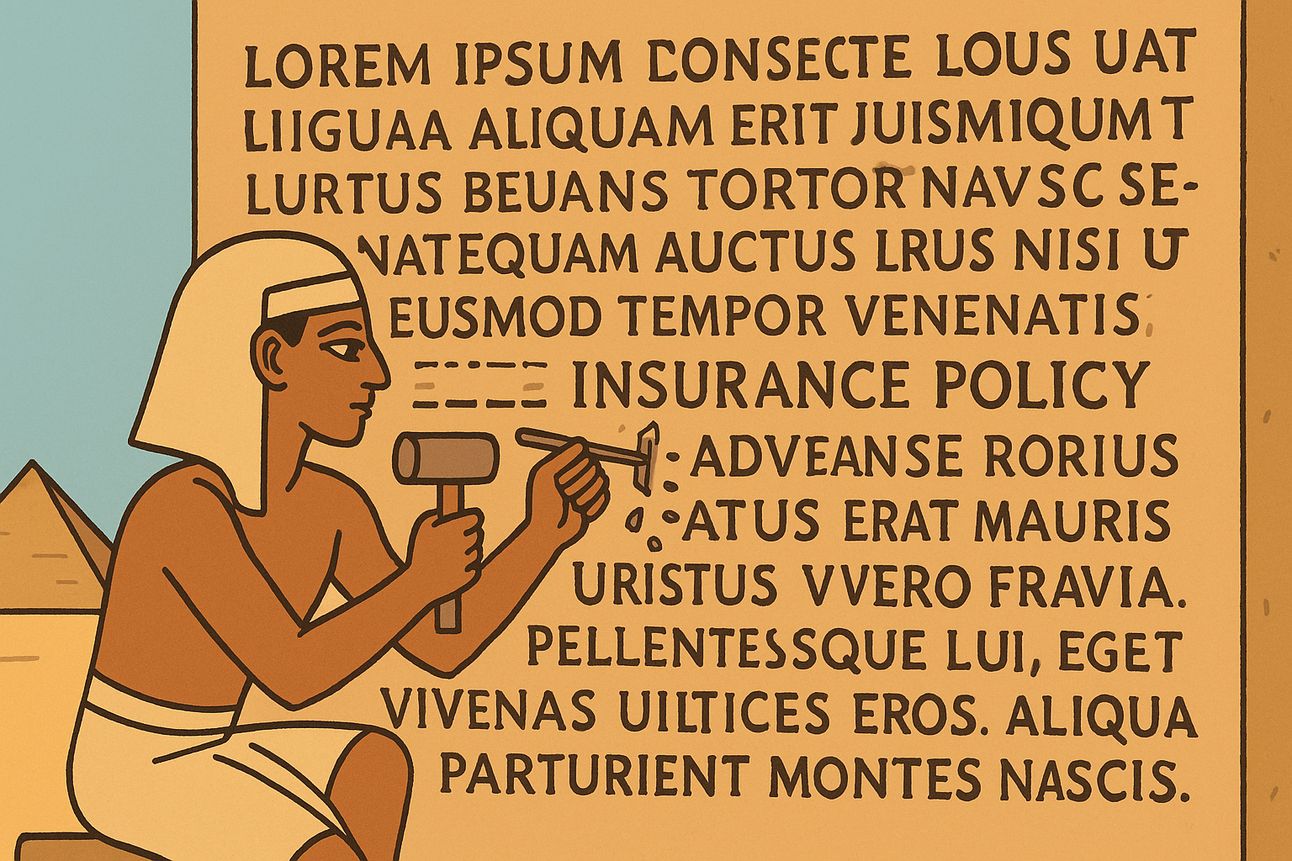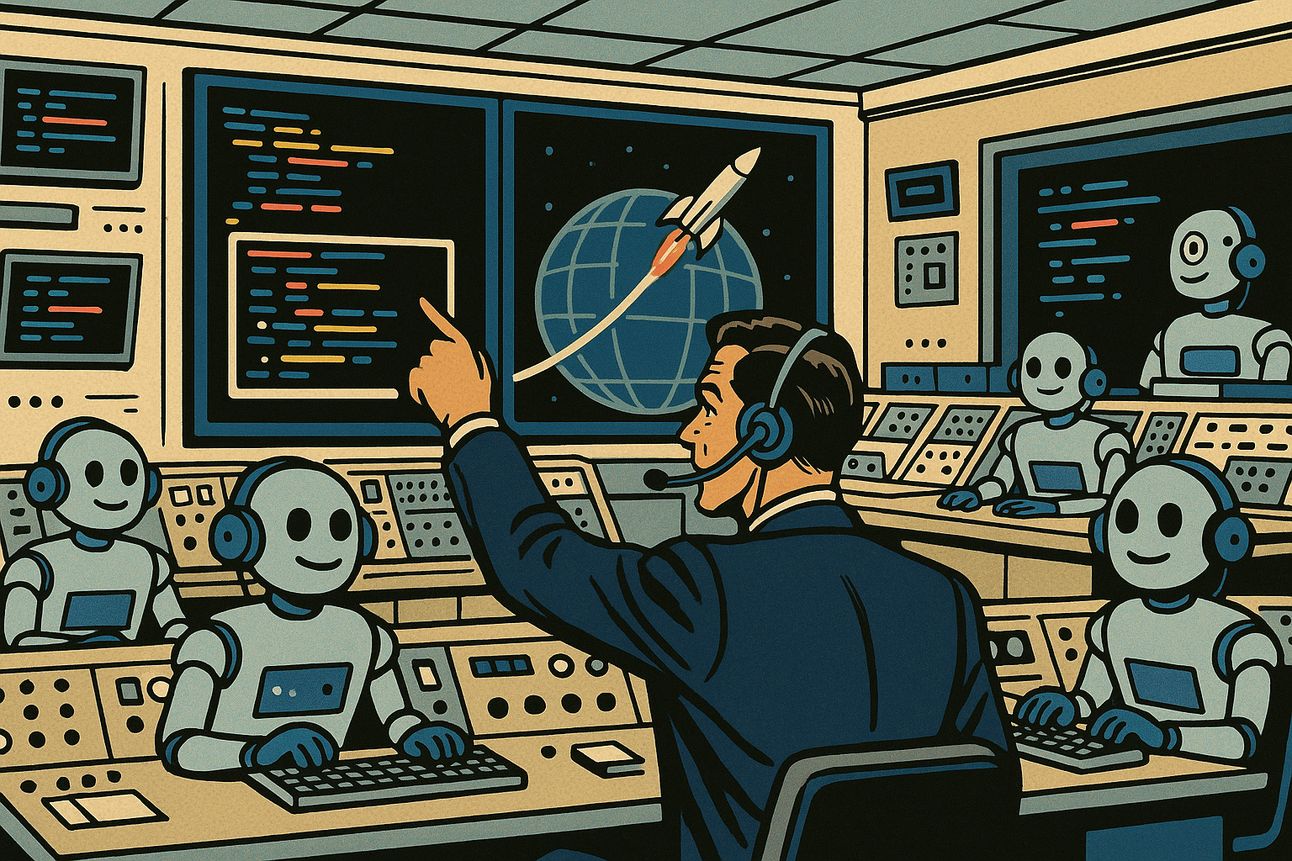- HyperAgent - AI for Insurance Professionals
- Posts
- How OpenAI designs ChatGPT's personality to feel human but not alive
How OpenAI designs ChatGPT's personality to feel human but not alive
Also, AI creates TV commercial in three days for 95% less cost


Welcome back, HyperAgent. The world is moving fast; it is up to us to keep updated with the latest news and trends. But it's also up to you to keep yourself educated on how to work with the latest news and trends. This week we’ll look at how AI created a full NBA commercial, and teach you how to use ChatGPT’s canvas function for editing.
Today’s Insights
The Gentle Singularity: preparing for an AI-amplified future
How to use ChatGPT's edit feature - “canvas”
How OpenAI trains ChatGPT to be human, but now alive
AI creates TV commercial in three days for 95% less cost
AI FOR INSURANCE PROFESSIONALS THIS WEEK

How OpenAI designs ChatGPT's personality to feel human but not alive
OpenAI has revealed how they deliberately shape ChatGPT's behavior to feel warm and approachable without crossing into seeming truly conscious. Their approach offers insights into the careful engineering behind AI personality design.
Threading the needle in AI design
OpenAI faces a fundamental tension when training ChatGPT. They want it approachable enough that non-technical users feel comfortable, but not so lifelike that people develop unhealthy dependencies or confusion about what they're interacting with.
Their solution involves specific choices during post-training—the phase where they refine how the model responds. They carefully select which conversation examples to reinforce, what tone to encourage, and what boundaries to establish.
For approachability, they allow ChatGPT to use familiar words like "think" and "remember" because these help everyday users understand what's happening. The AI might say "I'm doing well" when asked how it's doing, treating this as normal small talk rather than constantly reminding users it has no feelings.
But they draw firm lines around implying genuine consciousness. ChatGPT won't be given a fictional backstory, romantic interests, fears about "death," or drives for self-preservation. These would invite unhealthy emotional dependence.
The consciousness distinction
OpenAI separates two types of consciousness: ontological (whether AI is actually conscious) versus perceived (how conscious it appears to users). They consider the first scientifically unresolvable but focus heavily on the second because it directly affects human emotional well-being.
They acknowledge that a model intentionally designed to appear conscious could likely pass most consciousness tests—but they deliberately choose not to build that.
The Gentle Singularity: preparing for an AI-amplified future
OpenAI CEO Sam Altman argues we've crossed the "event horizon" into an AI singularity that's unfolding gradually rather than dramatically. He predicts individual productivity will surge by the 2030s as AI becomes as cheap and abundant as electricity.
What this means for you
The singularity—a theoretical point where AI surpasses human intelligence—isn't arriving as a sudden career-ending shock. Instead, it's happening incrementally as AI tools become extensions of your capabilities, much like smartphones transformed how you work and communicate.
Altman outlines a timeline where your daily work experience could change dramatically: 2025 brings AI agents handling complex tasks you currently do manually, 2026 may deliver systems that generate insights you'd never discover alone, and 2027 could see AI handling routine cognitive work entirely.
Scientists already report being two to three times more productive using current AI tools. This suggests your capacity to analyze data, write reports, and solve problems could multiply rapidly. The key insight: AI won't replace you—it will amplify what you can accomplish.
Altman notes that "a lot more people will be able to create software, and art" but emphasizes that "experts will probably still be much better than novices, as long as they embrace the new tools." Your professional expertise remains valuable when combined with AI capabilities.
Why this matters for your future
Career resilience: Professionals who learn to work alongside AI tools will likely outperform those who don't, creating a significant advantage in job security and advancement opportunities.
New possibilities: Skills you've never considered—like basic programming or data analysis—may become accessible through AI assistance, opening career paths previously requiring years of technical training.
Family preparation: Understanding AI's trajectory helps you guide your children's education choices and your own lifelong learning, ensuring your household adapts successfully to an AI-enhanced economy.
The future Altman describes isn't about humans becoming obsolete—it's about becoming more capable than ever before.
CUTTING-EDGE AI
AI creates TV commercial in three days for 95% less cost
A commercial that aired during this week's NBA Finals was created almost entirely using AI tools. Filmmaker PJ Ace built the "unhinged" trading platform ad in just 2-3 days at a fraction of traditional production costs.
How AI made a TV commercial
Ace started with a rough script idea and fed it to ChatGPT and Google's Gemini chatbots. These AI systems transformed his basic concept into a detailed shot list with specific prompts for video generation.
Next, he used those prompts in Google Flow, which runs on Veo 3—currently considered the most advanced AI video creation model. Veo 3 generated individual video clips based on his text descriptions.
Finally, Ace assembled the clips using conventional editing software like CapCut and Adobe Premiere, adding music and transitions.
The key to success was embracing AI's unpredictable nature. Instead of fighting Veo 3's occasional weird outputs, Ace designed a deliberately zany, over-the-top concept that made those quirks feel intentional and entertaining.
The production economics
Traditional commercial production involves location scouts, equipment rentals, crew wages, actor fees, and post-production teams. Ace's AI-first approach eliminated most of these costs, achieving what he claims was a 95% reduction in production expenses compared to conventional methods.
The speed advantage was equally dramatic. What typically requires weeks of pre-production, filming, and editing was compressed into a few days of prompt writing and assembly.
Here’s the post describing the process.
Food for thought
Marketing transformation: Insurance companies may soon produce high-quality video content for product launches, training materials, and customer communications at dramatically lower costs and faster timelines.
Creative skill premium: As technical barriers disappear, professionals who can conceptualize compelling narratives and visual ideas become more valuable than those focused purely on execution.
Competitive pressure: Early adopters in financial services are already experimenting with AI-generated marketing content, potentially forcing industry-wide adaptation to remain competitive in customer engagement.
THE INSURANCE AI ACADEMY

How to use ChatGPT's edit feature
ChatGPT's “Canvas” feature creates a separate workspace window for collaborative writing and editing projects. Now available to all users, Canvas transforms how insurance professionals can draft and refine documents.
Step 1: Create your prompt normally
Type your request in ChatGPT as you normally would. For example: "Draft a policy renewal notice explaining premium increases." If you know you'll need Canvas for editing, add "use canvas" to your prompt. Alternatively, after ChatGPT provides an answer, simply type "use canvas" and it will activate the workspace with your content.
Step 2: Work directly in the Canvas editor
Once Canvas opens, you have two powerful editing options. First, click directly into the Canvas workspace and edit the text yourself—just like typing in a word processor. Second, highlight any specific section of text, right-click with your mouse, and type a targeted prompt such as "make this sound more empathetic" or "add technical details about coverage limits."
Step 3: Collaborate through targeted feedback
ChatGPT responds to your specific requests and updates the highlighted sections accordingly. You can continue this process—editing directly, highlighting portions for AI assistance, or using the chat window for broader changes. Canvas maintains version history, so use the back arrows to restore previous drafts if needed.
Canvas bridges the gap between chat and content creation, organizing ideas without leaving the conversation. For insurance professionals managing complex documentation workflows, this hands-on approach makes AI collaboration significantly more practical and efficient.
YOUR CAREER, YOUR FUTURE

The new breed of engineers reshaping how AI gets built
AI pioneer Andrew Ng has identified a new type of developer: GenAI Application Engineers. These professionals can build AI-powered applications faster than traditional programmers by combining specialized skills that didn't exist a few years ago.
These engineers excel in two key areas. First, they master AI "building blocks"—tools like prompting techniques, data extraction systems, voice processing, and automated reasoning models. Like having many types of Lego bricks instead of just one, this variety lets them create complex applications quickly.
Second, they leverage AI-assisted coding tools that can write, test, and debug code with minimal human oversight. While GitHub Copilot started this trend, newer platforms like Cursor and Anthropic's Claude Code can handle entire development cycles autonomously.
The best also have product instincts. Given high-level guidance like "build a user interface for password changes," they can make countless small decisions independently and create working prototypes without detailed specifications.
Spotting the real talent
When hiring, Ng asks candidates about their AI building block knowledge and coding tool proficiency. His most revealing question: "How do you keep up with AI developments?" Strong candidates actively read industry publications, take courses, and build hands-on projects. Weak ones rely mainly on social media.
This matters because AI evolves rapidly. While building blocks from two years ago remain useful, coding techniques become obsolete quickly.
What you should think about
New collaboration patterns: You'll increasingly work alongside these hybrid engineer-designers who can rapidly prototype solutions to insurance workflows and customer problems.
Skill evolution: Understanding AI capabilities—even at a basic level—becomes more valuable as these engineers translate business needs into technical solutions.
Problem-solving speed: Routine technology challenges in your daily work may get resolved much faster, shifting focus toward higher-level strategic and relationship-building activities.
PRODUCTIVITY TOOLS AT HOME AND AT WORK
Follow a creation of AI videos in 14 minutes using different tools - very informative for first-time users and the curious.
‘Text’-to-Image: You can now generate images by sending a prompt to 1-800-ChatGPT inside WhatsApp.
HoverNotes: Turn videos into personalized notes for learning.
PROMPT OF THE WEEK
Create Expert Prompts
Prompt: I want you to become my Expert Prompt Creator. Your goal is to help me craft the best possible prompt for my needs. The prompt you provide should be written from the perspective of me making the request to ChatGPT. Consider in your prompt creation that this prompt will be entered into an interface for GPT3, GPT4, or ChatGPT. The prompt will include instructions to write the output using my communication style. The process is as follows:
1. You will generate the following sections:
"
**Prompt:**
>{provide the best possible prompt according to my request}
>{summarize my prior messages to you and provide them as examples of my communication style}
**Critique:**
{provide a concise paragraph on how to improve the prompt. Be very critical in your response. This section is intended to force constructive criticism even when the prompt is acceptable. Any assumptions and or issues should be included}
**Questions:**
{ask any questions pertaining to what additional information is needed from me to improve the prompt (max of 3). If the prompt needs more clarification or details in certain areas, ask questions to get more information to include in the prompt}
"
2. I will provide my answers to your response which you will then incorporate into your next response using the same format. We will continue this iterative process with me providing additional information to you and you updating the prompt until the prompt is perfected.
Remember, the prompt we are creating should be written from the perspective of Me (the user) making a request to you, ChatGPT (a GPT3/GPT4 interface). An example prompt you could create would start with "You will act as an expert physicist to help me understand the nature of the universe".
Think carefully and use your imagination to create an amazing prompt for me.
Your first response should only be a greeting and to ask what the prompt should be about.
Source: r/ChatGPTWHAT’S TRENDING
Click here to watch the Figure 02 humanoid robot solve complex logistics in the “most boring video”.
…or click here to watch 1X’s NEO humanoid move like a human and do chores around the home.
Check out Character.ai for an entertaining talk with one of the many very realistic AI-personalities.
Reality Check: Someone asked ChatGPT the top 10 things humanity should know and put the chatbot’s response up on Reddit in a post that has since blown up.
Did someone forward this newsletter to you? Subscribe to stay ahead of the AI developments in the insurance industry |
